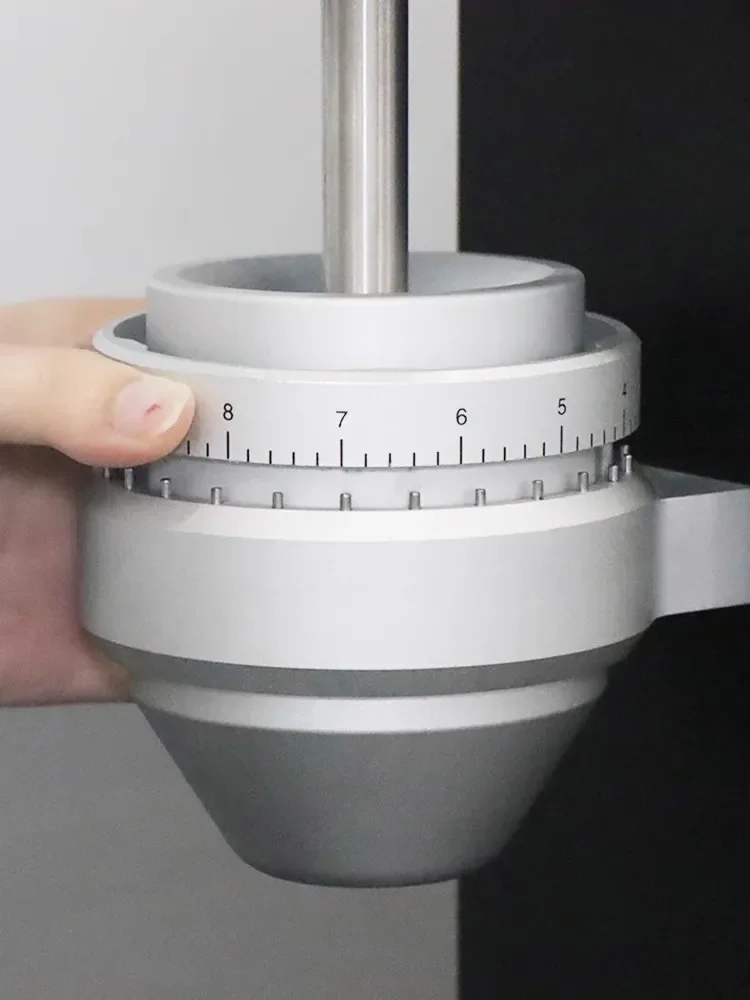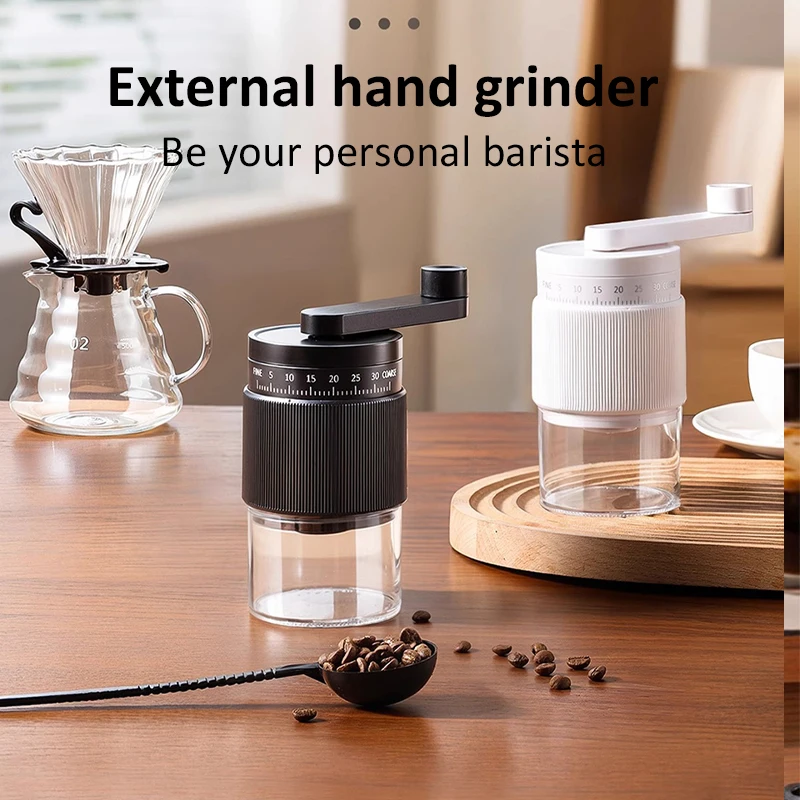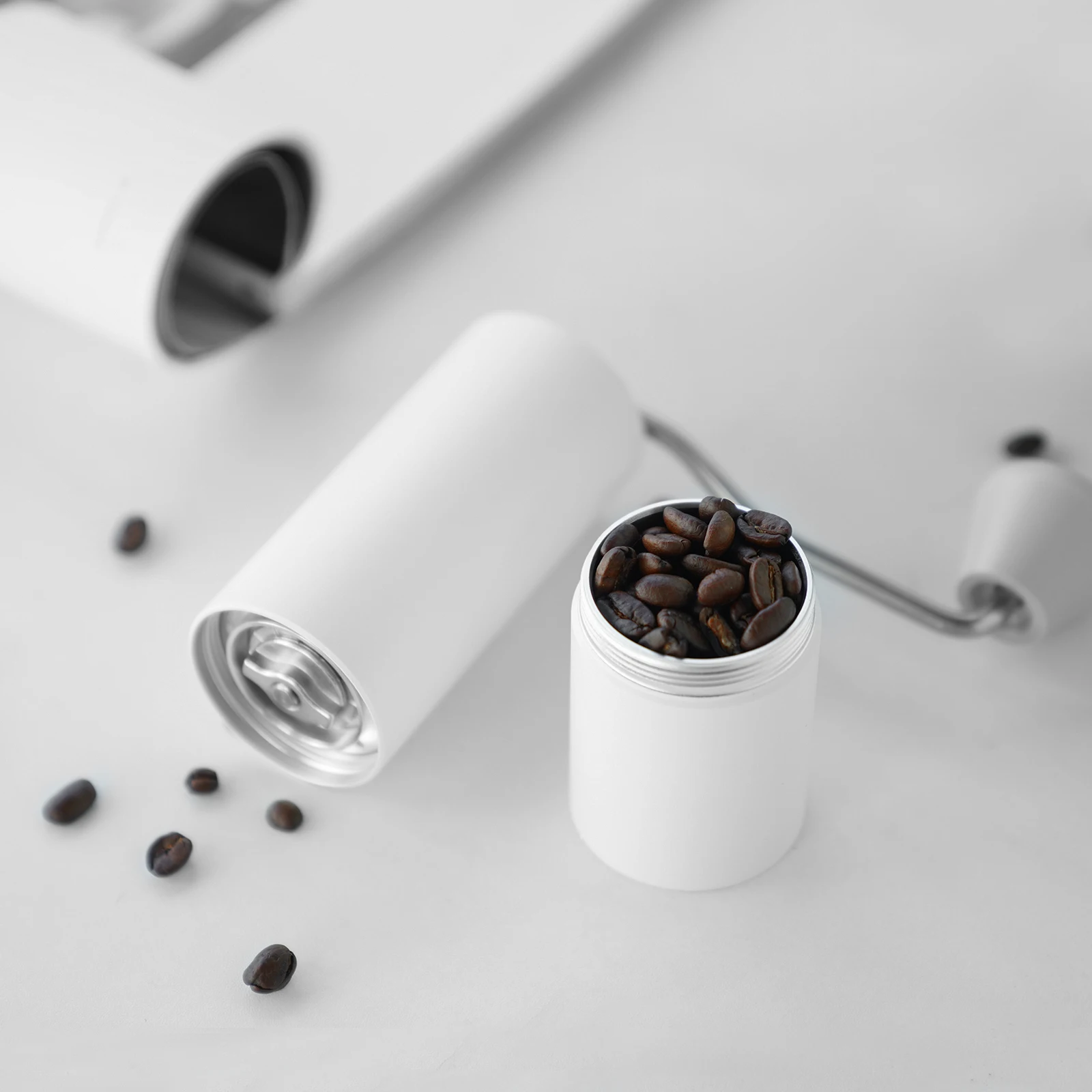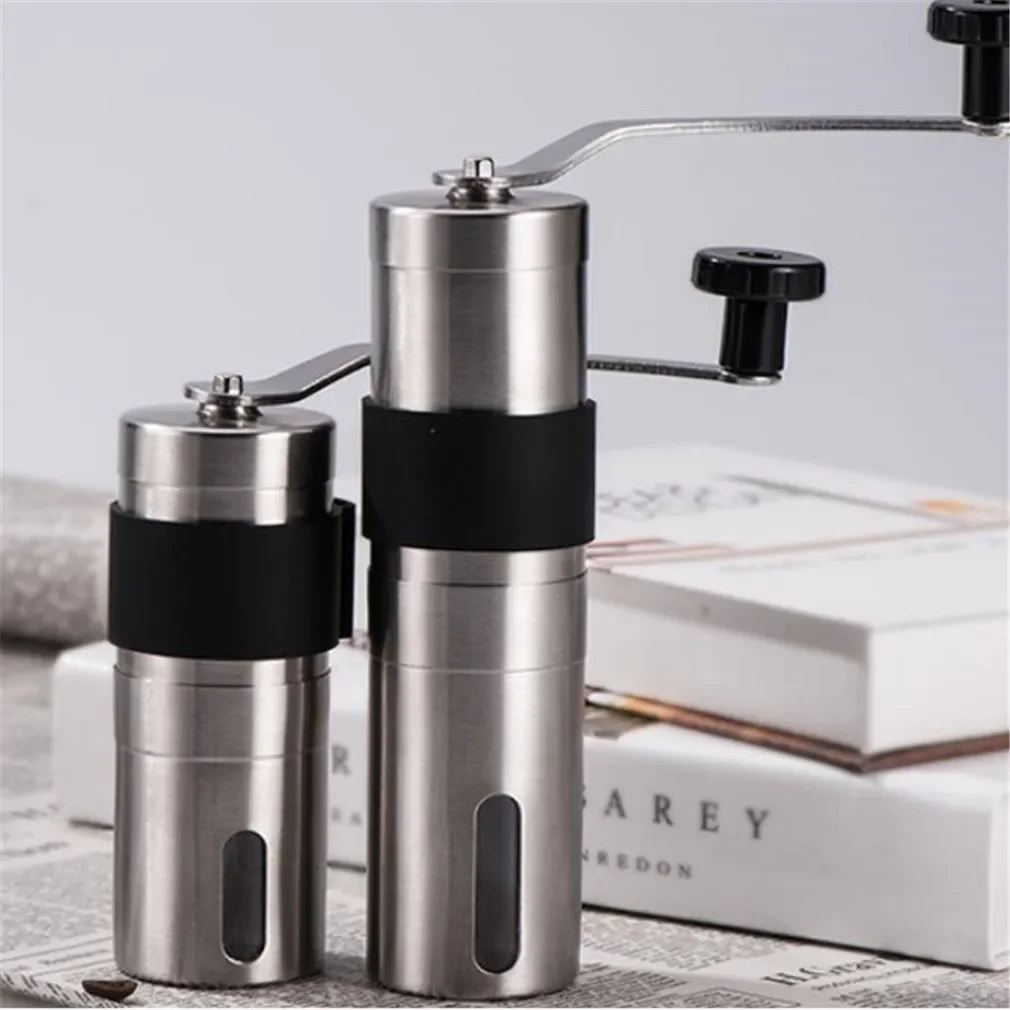Introduction
When it comes to brewing exceptional coffee at home, the grinder you choose plays a crucial role in determining the quality of your daily cup. Among the many decisions coffee enthusiasts face, selecting between metal and plastic hand grinder construction stands out as particularly significant. This choice affects not just the durability of your investment, but also grind consistency, portability, and ultimately, the flavor in your cup.
The material of your hand grinder impacts every aspect of the coffee grinding experience—from how it feels in your hands to how well it maintains precise burr alignment during use. For many coffee lovers, this decision can be surprisingly complex, balancing considerations of budget, intended use, and personal preferences.
Whether you’re preparing for your first quality grinder purchase or looking to upgrade your existing equipment, understanding the implications of all-metal coffee grinder designs compared to plastic alternatives will help you make an informed decision. In this comprehensive guide, we’ll explore every aspect of metal versus plastic construction to help you determine which option best suits your coffee journey.
Understanding Hand Grinder Construction Basics
Before diving into comparisons, it’s important to understand what we mean by “construction materials” in hand grinders. A typical manual grinder consists of several key components:
- Body/Housing: The main external structure that you hold while grinding
- Burrs: The grinding mechanism (typically conical or flat) that cuts the coffee beans
- Shaft and Bearings: The central axis that connects the handle to the burrs
- Handle and Knobs: The parts you directly manipulate during grinding
Common metals used in premium hand grinders include:
– Stainless steel: Prized for durability and corrosion resistance
– Aluminum alloy: Lighter weight while maintaining structural integrity
– Zinc alloys: Often used for die-cast components
For plastic grinders, manufacturers typically use food-grade options:
– ABS (Acrylonitrile Butadiene Styrene): Durable and impact-resistant
– Polycarbonate: Transparent and highly resistant to breaking
– Tritan: BPA-free with excellent clarity and durability
It’s worth noting that even “all-metal” grinders often incorporate some non-metal parts like rubber grips or plastic knobs. Similarly, many plastic-bodied grinders feature metal burrs and internal mechanisms. Understanding stainless steel coffee grinder durability provides crucial context for evaluating construction quality beyond mere appearances.
Durability and Longevity: Which Material Lasts Longer?
When investing in a quality coffee grinder, durability becomes a primary concern for most buyers. How do metal and plastic constructions compare in terms of longevity?
Metal grinders generally offer superior resistance to daily wear and tear. Stainless steel and aluminum bodies can withstand impacts that might crack plastic alternatives. If dropped accidentally, metal grinders typically dent rather than break—an important consideration for travel use. The solid feel of premium all-metal hand grinder options often translates to years of reliable service without degradation.
However, quality plastic grinders deserve more credit than they often receive. Modern food-grade plastics used by reputable manufacturers offer impressive durability:
– High-quality ABS can withstand thousands of grinding sessions
– Premium plastic grinders often survive drops that would damage less expensive metal models
– Advanced polymers resist UV degradation and maintain their appearance over time
The construction quality and design often matter more than material alone. A thoughtfully engineered plastic grinder from a respected manufacturer will typically outlast a poorly made metal one. While metal generally edges out plastic in pure longevity tests, the difference may not justify significantly higher costs for casual users.
Grinding Performance and Consistency
When evaluating grinders, grinding performance—specifically consistency—should be your primary concern. The material’s impact on this function is substantial but sometimes misunderstood.
Metal construction offers distinct advantages for maintaining consistent burr alignment:
– Greater rigidity throughout the grinding process
– Minimal flexing under pressure when grinding harder beans
– Better stability for the central shaft and bearings
– Reduced vibration during operation
Plastic construction presents certain challenges:
– Potential flexing in lower-quality models that can affect alignment
– More susceptible to expansion/contraction with temperature changes
– May require more precise engineering to achieve similar stability
However, the mounting system connecting the body to the burr assembly matters tremendously regardless of material. Some plastic grinders feature sophisticated mounting systems that outperform basic metal designs. The stability of this connection directly impacts your ability to achieve perfect grind consistency across brewing methods.
For espresso enthusiasts, where micron-level precision matters significantly, metal construction typically provides advantages. For pour-over, French press, or AeroPress brewing, well-designed plastic grinders can produce equally excellent results at potentially lower cost.

Weight and Portability Considerations
The difference in weight between metal and plastic construction presents clear tradeoffs that directly impact the user experience, particularly for travelers and those who value portability.
Metal grinders typically weigh between 12-24 ounces (340-680 grams), while plastic alternatives generally range from 8-14 ounces (227-397 grams). This weight difference becomes particularly noticeable in:
- Travel scenarios where every ounce counts in luggage
- Hand fatigue during extended grinding sessions
- Overall stability during countertop use
While heavier metal grinders provide stability during grinding, they can cause hand fatigue more quickly. The additional weighing options metal coffee grinders present is worth considering if you regularly prepare multiple cups or grind for espresso, which requires more time and effort.
For outdoor enthusiasts and frequent travelers, lightweight plastic grinders offer significant advantages. However, metal options provide better durability during rough handling in transit. Your personal priorities—whether weight savings or maximum durability—should guide this aspect of your decision.
Cost Analysis and Long-Term Value
One of the most significant differences between metal and plastic hand grinders is their price point, though this gap has narrowed in recent years with premium plastic options entering the market.
Typical price ranges:
– Entry-level plastic grinders: $25-45
– Premium plastic grinders: $60-120
– Entry-level metal grinders: $60-100
– Premium metal grinders: $120-250+
When evaluating long-term value, consider:
– Frequency of use (daily users benefit more from durability investments)
– Replacement cost if damaged
– Resale value (metal grinders typically retain value better)
– Expected lifespan relative to initial investment
For casual weekend brewers, a quality plastic grinder often provides excellent value. For daily users or those seeking maximum longevity, the higher upfront cost of stainless steel manual coffee grinders often proves worthwhile over time. The most cost-effective choice depends largely on your personal usage patterns and how long you intend to keep your grinder.
Maintenance, Cleaning, and Hygiene
The maintenance requirements for different grinder materials can significantly affect your day-to-day experience and the long-term condition of your equipment.
Metal grinders offer several maintenance advantages:
– Generally easier to clean thoroughly
– Less susceptible to coffee oil buildup and staining
– More resistant to odor absorption
– Often easier to disassemble completely for deep cleaning
Plastic grinders present distinct challenges:
– May develop static electricity that causes grounds to cling
– More prone to staining over time
– Can absorb odors if not regularly cleaned
– May be harder to clean in crevices and threaded areas
For both types, regular cleaning manual coffee grinders is essential to maintain performance and hygiene. Simple maintenance practices include:
– Regular brushing of burrs after use
– Periodic deep cleaning with grinder-specific cleaning products
– Careful disassembly and reassembly when necessary
While metal grinders generally require less frequent deep cleaning, the difference in maintenance needs may not be significant enough to be the deciding factor for most users.

Taste Neutrality and Coffee Quality
For discerning coffee enthusiasts, potential flavor impact is a crucial consideration when choosing grinder materials. While opinions vary on this topic, there are some general principles to consider.
High-quality metals used in premium grinders (particularly stainless steel) are generally taste-neutral and won’t impart flavors to your coffee. The smooth, non-porous nature of metal surfaces prevents absorption of coffee oils that could affect future brews.
Quality food-grade plastics used by reputable manufacturers are designed to be taste-neutral as well. However, lower-quality plastics can potentially impart subtle flavors, particularly when new or when exposed to heat. Some users report detecting plastic notes in early uses that diminish over time.
The most significant flavor impact typically comes not from the body material but from:
– Burr quality and material
– Grind consistency
– Cleanliness of the grinder
For optimal flavor preservation, consider exploring manual coffee burr grinders known for their taste neutrality, regardless of their body construction material. Regular cleaning is equally important for both metal and plastic options to prevent old coffee oils from affecting new brews.
Burr Quality: The True Heart of Any Grinder
While the construction material debate often dominates discussions, burr quality is ultimately the most critical factor determining grinder performance. A premium burr set in a plastic body will outperform mediocre burrs in a metal housing every time.
Common burr materials include:
– Steel burrs: Sharp, durable, and effective for most brewing methods
– Ceramic burrs: Maintain sharpness longer but more brittle
– Titanium-coated burrs: Extremely durable with excellent cutting performance
The relationship between body construction and burrs is important:
– Metal bodies typically provide more stable mounting for burrs
– Higher-end grinders of both materials feature better burr alignment
– Body rigidity helps maintain consistent burr distance during grinding
When evaluating grinders, prioritize models with precision-manufactured burrs that deliver consistent particle size. Understanding the differences between metal ceramic burrs heat comparison can help you select the ideal combination for your brewing preferences.

Noise, Heat, and Operational Experience
The sensory experience of using a hand grinder varies significantly between construction materials, affecting your daily brewing ritual.
Metal grinders typically:
– Produce more resonant, metallic sounds during operation
– Feel cool to the touch initially, warming slightly during use
– Conduct heat more readily from your hands to the beans
– Provide satisfying weight and feedback during grinding
Plastic grinders generally:
– Create more muted, sometimes “cheaper” sounding grinding noise
– Remain temperature-neutral during operation
– Insulate better, minimizing heat transfer to beans
– Feel lighter in hand, sometimes requiring more stabilization
The impact heat retention metal coffee grinders have is particularly relevant for espresso enthusiasts, as heat can potentially affect extraction characteristics. For most brewing methods, however, the heat differential during manual grinding is minimal enough not to significantly impact flavor.
Your personal preference regarding the tactile and auditory experience of grinding may influence your material choice just as much as functional considerations.
Which Construction Type Is Right For You?
Selecting the ideal construction type depends largely on your specific needs and usage patterns. Consider these scenarios to help identify your best match:
For daily home users:
– Metal may be preferable if durability and stability are top priorities
– Plastic works well if counter space is limited or if you grind smaller amounts
For travelers and outdoor enthusiasts:
– Lightweight plastic models from the travel coffee grinder category save precious ounces in your pack
– Compact metal options provide maximum durability in rough conditions
For budget-conscious buyers:
– Quality plastic grinders offer excellent performance at lower price points
– Entry-level metal grinders provide durability but may sacrifice some grind quality
For longevity and investment:
– Premium metal grinders often last decades with proper care
– High-end plastic models from reputable manufacturers offer comparable lifespan at slightly lower cost
Fine Adjustment Hand Grinder, Precision Manual Grinder, Travel Coffee Grinder
Price range: $185.11 through $494.63 Select options This product has multiple variants. The options may be chosen on the product pageHand Burr Grinder, Hand Crank Coffee Grinder, Manual Espresso Grinder, Portable Coffee Grinder
Price range: $262.72 through $300.22 Select options This product has multiple variants. The options may be chosen on the product pageManual Burr Mill, Manual Coffee Grinder Stainless Steel, Manual Coffee Mill Grinder, Mechanical Coffee Grinder
Price range: $127.26 through $130.32 Select options This product has multiple variants. The options may be chosen on the product pageHand Burr Grinder, Manual Coffee Grinder Stainless Steel, Precision Manual Grinder
Price range: $183.64 through $187.52 Select options This product has multiple variants. The options may be chosen on the product page
Your brewing methods also influence the ideal choice—espresso enthusiasts benefit more from metal’s stability, while pour-over brewers may find excellent results with either construction type.
Beyond Material: Other Quality Indicators to Consider
While material choice is important, other quality indicators often have equal or greater impact on your grinding experience:
- Precision engineering: Look for tight tolerances and precise machining in all components
- Bearing quality: Smooth, stable bearings indicate overall attention to detail
- Handle design: Comfortable, efficient handles make grinding less laborious
- Adjustment mechanism: Clear, consistent grind settings with minimal slippage
- Overall fit and finish: No wobbling parts or uneven surfaces
These factors often explain why coffee grinder not consistent performance issues, regardless of construction material. A well-made grinder demonstrates attention to detail in:
- Smooth operation without wobbling
- Consistent grind size batch after batch
- Intuitive adjustment that stays in place
- Efficient grinding that requires minimal effort
When evaluating options, handle the grinder if possible to assess these quality markers firsthand.
Conclusion: Making Your Decision
The debate between metal and plastic hand grinders ultimately comes down to balancing performance needs with practical considerations like budget, portability, and intended use. While metal construction generally offers advantages in durability and stability, well-designed plastic grinders can deliver excellent grinding performance at more accessible price points.
Remember that material is just one factor among many. The quality of burrs, precision of manufacturing, and overall design integration matter tremendously regardless of what the grinder is made from. The best precision manual grinder for you matches your specific coffee routine, travel needs, and brewing preferences.
By considering all the factors we’ve discussed—from durability and performance to weight and maintenance—you can make a confident choice that will serve your coffee needs for years to come. Whether metal or plastic, the perfect grinder is the one that helps you consistently create your ideal cup, day after day.







